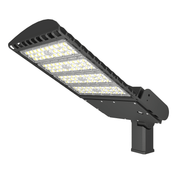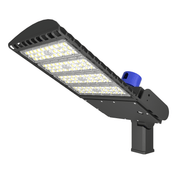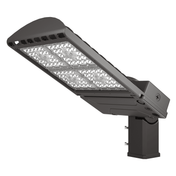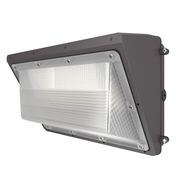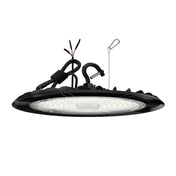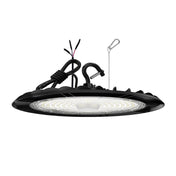Introduction
LED technology was first discovered in the early 20th century and was initially used as an indicator light for electronic products. At the end of the 20th century, scientists used red, green and blue LEDs to emit white light and gradually applied it to the lighting industry. Compared with traditional light sources, LED lamps are widely used in industrial, commercial and outdoor lighting due to their high energy efficiency, long life and high color rendering index (compared with high-pressure sodium lamps and some halogen lamps). With the improvement of lighting quality requirements, people are no longer only concerned about whether the lighting provides sufficient illumination/brightness, but also pay more attention to the quality of lighting, including uniformity, glare (what is glare and how to reduce it?), color rendering index, and energy efficiency. In this article, we will focus on the color rendering index of LED lighting and the energy efficiency of LED lighting. In this article, we will discuss what is color rendering index is and light efficiency, and how to improve the color rendering index. We will also discuss the relationship between the color rendering index and light efficiency because there is often a conflict between the high color rendering index and the high light efficiency. For example, improving the color rendering index often comes at the expense of some light efficiency. On the other hand, pursuing high light efficiency may lead to a decrease in the color rendering index. Next, we will explain them one by one. What about it?
What is CRI?
The color rendering index (Ra/CRI) is an indicator that measures the ability of a light source to reproduce the true color of an object, ranging from 0 to 100. The higher the value, the more accurate the color reproduction. The International Commission on Illumination (CIE) sets the color rendering index of sunlight (natural light spectrum) to 100, and specifies 15 test colors, with R1-R15 representing the display index of these 15 colors, respectively. When a light source is compared with a specified reference light source (sunlight), we can obtain the difference between the color coordinates of the 8 standard color samples (R1-R8) under the light source to be tested and the reference light source, and then use a specific formula to calculate the special color rendering index (Ri) of each color sample, and CRI (Ra) is the arithmetic mean of the color rendering index of these 8 standard color samples. The extended color rendering index (i.e., R9-R15) is sometimes used to evaluate the effectiveness of light sources in rendering saturated colors (such as red and blue), which may have specific requirements in some application scenarios. The ideal CRI value >90+ provides excellent color rendering for high-end applications, while a CRI of 80-89 is suitable for most residential and commercial uses. Below 80, the lamp has poor color rendering and is usually used for industrial or road lighting (What should we pay attention to for road lighting?). There is no requirement for color accuracy.
Can’t tell the difference between the black and navy-colored socks in your walk-in closet under your old fluorescent lights? It could be that the current lighting source has a very low CRI level. Color Rendering Index (CRI) is a measurement of how natural colors render under an artificial white light source when compared with sunlight. The index is measured from 0-100, with a perfect 100 indicating that the colors of objects under the light source appear the same as they would under natural sunlight. CRIs under 80 are generally considered ‘poor’ while ranges over 90 are considered ‘great’.
High CRI LED lighting renders beautiful, vibrant tones across the full-color spectrum. However, CRI is only one measurement of light quality. To truly understand a light source’s capability to render the colors you want, there are deeper tests that we do and our lighting scientists recommend. We will detail that further on here.
The above explanation may be a bit abstract, so let's use pictures to illustrate. We generally believe that the color rendering index of natural outdoor light will reach 100 points, so in essence, we use the color rendering index to test and compare artificial light and sunlight. For example, if you observe an orange grapefruit in daylight, you will see a brightly colored grapefruit. This is because the spectrum of natural light contains all colors, and when the light shines on the grapefruit, all light except yellow is absorbed, and what you see is the reflected yellow. The same orange grapefruit, if observed under an LED light with a low color rendering index, will not appear bright orange in the human eye due to the lack or low proportion of yellow in the spectrum. On the contrary, if a high-quality LED light (whose spectrum is as close to natural light as possible and has a high color rendering index) is used, you will see a bright orange grapefruit.
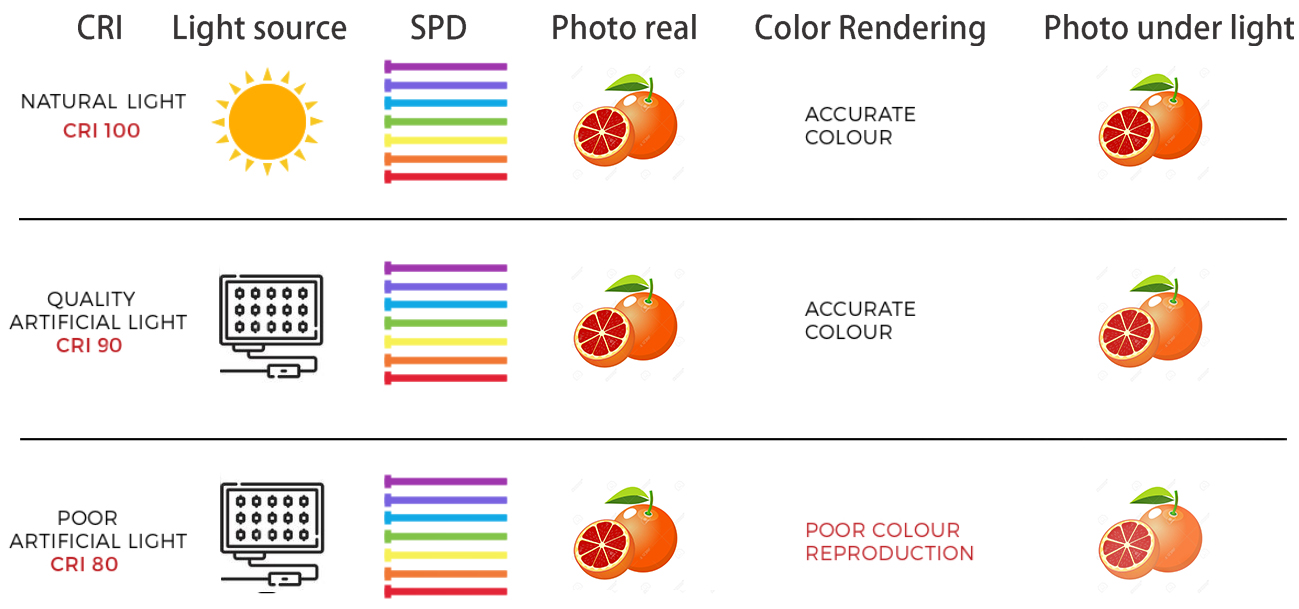
How to get a high CRI LED lamp?
There are currently three mainstream solutions to improve the color rendering index of LED lamps. The first is to use different phosphor ratios; the second is to reduce the PN junction temperature and improve the adaptability of phosphors at high temperatures; the third is to use color compensation technology (using red LEDs or amber LEDs to compensate for the color rendering index of LEDs). Let's explain them one by one.
Using different phosphor ratios
The most direct and effective way to improve the color rendering index of LED light sources is to make the spectrum of white light LEDs as close to the spectrum of sunlight as possible; that is, the closer the spectrum is to the reference light source, the higher the color rendering index. In other words, the more comprehensive the spectrum in the visible light range emitted by the LED light source, the higher the color rendering index, and the closer the color rendering index of the light source is to 100. In the early days of LED light source development, it was difficult to improve the color rendering index of white light LED light sources, mainly because the most efficient and classic blue light LED chip + yellow phosphor (YAG) white light implementation scheme lacked the color rendering of the saturated red (ie R9) part, and also lacked the cyan part near 490nm, resulting in a large lack of spectrum emitted by the entire LED. Later, with the development of technology, mainly the rapid development of phosphor technology, the application of red phosphor technology has become more and more mature. Now the color rendering index of white light LED light sources with added red phosphor can exceed 90 or even close to 100. In practical applications, it is often necessary to find such high color rendering index LED chips, which is relatively easy for most suppliers to do. But when customers have requirements for light efficacy, they must choose between high color rendering index (high color rendering index sometimes leads to high TLCI, see CRI vs. TLCI for details) and high light efficacy. If both are needed, you must pay more to get high-quality (high CRI + high light efficacy) LED chips.
Lower the PN junction temperature
In theory, the white light produced by the combination of blue LED chips and phosphors is indeed close to natural light. But practice is different from theory, and this difference is mainly caused by heat. Heat will have a significant impact on phosphors. As we all know, high-power LEDs in outdoor lights (street lights, street lights) and floodlight LEDs (sports lamps) will continuously generate heat during operation, and the heat dissipation part will continuously dissipate this heat. As the temperature rises, the activity of the phosphors in the LED chip will decrease, especially the luminous efficiency of the red part will decrease more significantly, which will eventually lead to a change in the spectral distribution of the LED chip, that is, the color rendering index (CRI) will become lower. On the contrary, when the temperature drops, the activity of the phosphors in the LED chip will increase, that is, the luminescence of the red part will increase, so that the spectral distribution is more continuous, and the color rendering index (CRI) of the LED will also increase. Therefore, in practical applications, we need to pay attention to the heat dissipation of the lamps to ensure that the LED chips work at a lower temperature, thereby reducing the negative impact of high temperature on the phosphors. In addition, if you observe the test report of LM82, you will find that high temperature will also cause the luminous efficiency of LED lamps to decrease. The reason has been explained before, that is, the activity of the phosphors is reduced.
Using color compensation technology
Color mixing technology expands the spectral range of the light source by combining LED chips of different wavelengths (such as red, green, blue, etc.) or optimizing phosphors, making it closer to the spectral distribution of natural light, thereby significantly improving the color rendering index (CRI) of LEDs. This method can make up for the deficiencies of red and green light in the traditional LED spectrum and enhance the color reproduction ability. However, color mixing technology faces many challenges in terms of cost and process complexity. This technology is similar to RGB lighting solutions (Hylele RGB road pole lights), which usually require more LED chips to achieve white light lighting. When used to improve the color rendering index, the light output (luminous flux) of LEDs of different colors needs to be precisely adjusted to simulate the continuous spectrum of natural light, which inevitably increases costs and brings technical complexity.

What is luminous efficiency?
Luminous efficiency is defined as the ratio of luminous flux to input electrical power (lm/W), that is, the luminous flux generated for every watt of electrical energy consumed. The calculation formula is luminous efficiency = lumen output/lamp wattage. It can be seen that luminous efficiency is determined by two factors: luminous flux and input wattage. The unit of luminous flux is lumen (lm). The larger the value, the more light the light source emits, but the generation of luminous flux requires electrical power, which is in watts (W). The higher the ratio of luminous flux to lamp wattage, the higher the efficiency of the light source in converting electrical energy into light energy, which means that the less electrical energy is consumed at the same brightness, the higher the luminous efficiency of the lamp. The luminous efficiency of different light sources (such as incandescent lamps, fluorescent lamps, and LEDs) varies greatly. The current mainstream LED luminous efficiency can reach 230lm/W. However, the luminous efficiency of light of different wavelengths (different spectra) is different. This is because the human eye has different sensitivities to light of different wavelengths. It is most sensitive to green light (wavelength of about 555nm), while it is less sensitive to blue light and red light. In the previous section, we mentioned that changing the ratio of different colors of light in the light can improve the color rendering index. For this reason, excessively increasing red light to improve the color rendering index will inevitably lead to a decrease in luminous efficiency.
How to improve luminous efficiency?
Improving luminous efficiency is the core goal in the design and manufacture of lighting systems, involving the optimization of multiple key factors. Through the calculation formula, we can know the two main directions of improving luminous efficiency. The first is to maximize the luminous flux emitted by the LED chip (under the same wattage), and the second is to minimize the wattage consumed by the lamp. For the first point, we need to choose LED chips with high luminous efficiency and reduce the light loss in the lamp, including the light trapped inside the lamp caused by the lens, reflector cup, lamp structure, etc. For the second point, we need to reduce the power consumption outside the LED chip, and its consumption mainly comes from the power supply, so it is necessary to optimize the electrical parameter design and select high-quality LED drivers (power factor correction PFC technology). In addition, attention should be paid to the heat dissipation of the lamp. Generally speaking, the higher the operating temperature (Tj) of the lamp, the lower the efficiency of the lamp, which is consistent with the requirements of CRI. At the same time, good heat dissipation is also conducive to slowing down light decay, thereby extending the life of the lamp. If you are interested in how to improve the luminous efficiency of lamps, you can move to the blog "How to improve luminous efficiency?".
What is the relationship between CRI and luminous efficiency?
As humans, we see light with our eyes. These special biosensors have a lot of working parts. The iris controls the amount of light that enters the eye by adjusting the size of the pupil, which can expand from a minimum diameter of 2 mm (in bright conditions) to a maximum diameter of 8 mm (in dark conditions). When there is plenty of light, it closes to protect the sensitive cells in the eye; when there is not enough light, the iris controls the pupil to expand to allow more light in. There are millions of tiny sensory cells called rods and cones in our eyes. Rods are responsible for sensing light in low light conditions (scotopic vision), while cones perform best in bright conditions (like daylight) and are responsible for color perception (photopic vision). There are three types of cones, each sensitive to a specific wavelength of light - short-wave sensitive cones (S cones, about 420-440 nanometers, sensing blue light), medium-wave sensitive cones (M cones, about 530-540 nanometers, sensing green light) and long-wave sensitive cones (L cones, about 560-580 nanometers, sensing red light). The figure below is the photopic spectral light efficiency function, we can see that the cones peak at 555 nanometers, which shows that the cones of the eye are most sensitive to yellow-green light with a wavelength of 555 nanometers. Compared with other wavelengths of light, this wavelength produces the highest brightness.
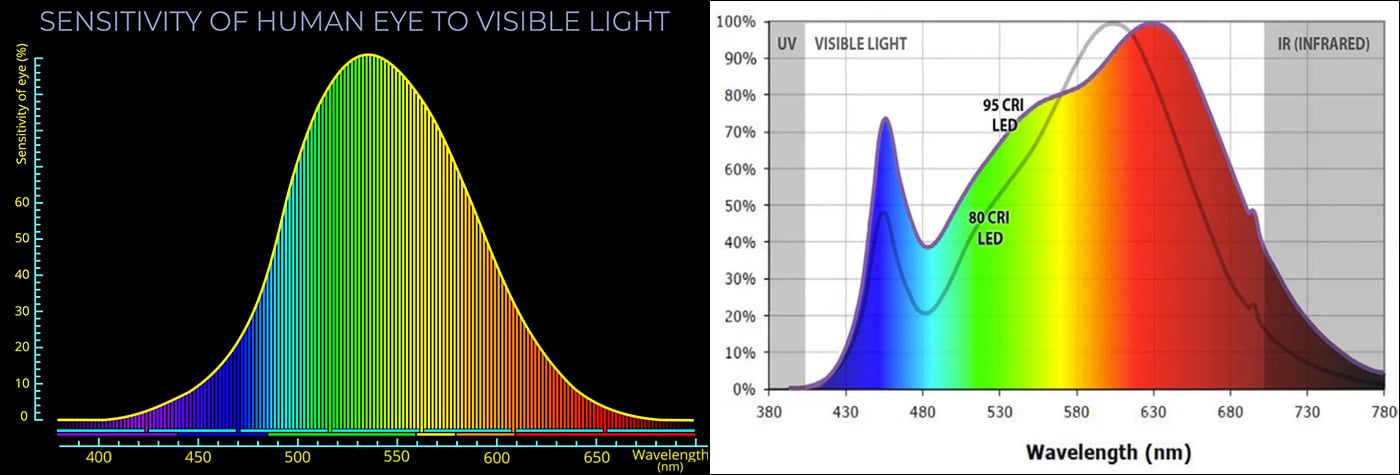
Human eye sensitivity to visible light High CRI vs Low CRI
Through the relevant knowledge in the section "How to improve the color rendering index of LED lights", we can understand that adding phosphors to LED chips can improve the color rendering index. White light LED lighting usually has a low color rendering index due to the lack of saturated red (i.e. R9) components and cyan components near 490nm. By adding red phosphors, the color rendering index of LEDs can be increased to 80-90 or even higher. But there is a contradiction here: different wavelengths of light have different luminous efficiencies. Although excessive addition of red phosphors can improve the color rendering index, it will reduce the light efficiency. In addition, many countries are now beginning to restrict the use of blue light (understand the blue light in LEDs) components in LEDs (for example, promoting the use of 1800K low color temperature LEDs). As can be seen from the figure below, this adjustment has led to a significant change in the spectral composition - the proportion of green light has been greatly reduced, resulting in a decrease in the overall light efficiency of the lamp. At the same time, the reduction in the proportion of blue light has also hurt the color rendering index. It is precisely because of the intricate constraints between these parameters that the development of LED technology still faces many challenges, and there is still a long way to go in the future.
Temperature also affects the color rendering index and light efficiency. In the chapter on how to improve the color rendering index and light efficiency, we know that the lower the temperature, the more beneficial it is to the color rendering index and light efficiency. ZTE has been committed to optimizing the heat dissipation of lamps. From structural design to Ts point temperature testing and third-party test reports, ZTE has strict requirements to ensure that the temperature of lamps is within the appropriate range.

To summarize, in general, the lower the color rendering index, the higher the lumen output. When you look at the datasheet of the Lumileds 3030 LED, you will see that when we increase the color rendering index from 70 to 80, the lumen output will drop by about 6%. When the color rendering index increases from 80 to 90, you will see that the lumen output will drop by about 14-15%. We can see that we have to choose between the color rendering index and the luminous flux. If you need a high color rendering index, then you need to reduce the requirements for luminous flux. And the task of how to improve the color rendering index and luminous flux can only be left to LED manufacturers for further research. One is the mixing of phosphors, and the other is to reduce the temperature accumulation in the LED chip (more about the operating temperature of LEDs and LED drivers). As a lighting manufacturer, we need to truthfully inform customers of such facts, and at the same time reasonably design the lamps to avoid the adverse effects of high temperature on the color rendering index and luminosity. Hylele has optimized the technical solutions and developed different solutions for the balance between light efficiency and high color rendering spectrum. The following are different LED products of ZTE, and those who are interested can learn more about them.
Trade-offs in energy conversion
Balanced design of light efficiency and color rendering
Light source design needs to make a trade-off between "maximizing light efficiency" and "color reproduction". For example, LED can improve light efficiency by reducing the spectral output of the red light band, but it will lead to a decrease in the color rendering index.
Additional loss of thermal management
High color rendering lamps often use multi-channel LEDs or complex fluorescent layers, which may increase the demand for heat dissipation and indirectly reduce the effective light efficiency.
Adaptation requirements for application scenarios
Differentiation of function priority
Scenarios such as commercial displays require high color rendering (Ra≥90) and can accept moderate light efficiency loss; ordinary lighting scenarios prioritize light efficiency and have lower color rendering index requirements (Ra≥80)38.
Gradual optimization of technological development
New materials (such as quantum dots and purple LED chips) are gradually narrowing the gap between color rendering index and light efficiency through more precise spectral regulation, but at present, there is still a trade-off between the two27.
In summary, the negative correlation between color rendering index and luminous efficiency stems from the inherent contradiction between spectral characteristics, material technology, and energy conversion efficiency. This relationship is still difficult to completely break through under existing technical conditions.
Summary
This article focuses on two key factors in the field of LED lighting: color rendering index (CRI) and luminous efficacy. The former measures the ability of a lamp to display the true color of an object. We know that the CRI in a lamp can be improved by using different phosphor ratios and optimizing the heat dissipation of the lamp. The latter is the efficiency of the lamp in converting electrical energy into light energy. By using efficient LED chips and high-conversion-efficiency LED drivers, we can improve the luminous efficacy of the lamp. However, users often need to choose between high CRI and high luminous efficacy. If a lamp with high CRI is required, the efficiency of the lamp will be lower. If a high-efficiency solution is required, we often need to make concessions on CRI. Of course, you can also choose a high CRI and high-efficiency solution, but at this time, it often costs more. Hylele's LED lighting solution can achieve a high color rendering index (according to project requirements) and high-efficiency LED lamps by selecting high color rendering index lamp beads and optimizing lamp design, such as CRI80, luminous efficacy>160lm/w. The solution involves road lighting, stadium lighting, parking lot lighting, and industrial lighting. If you are interested in our lighting solutions, please consult us for more information.



